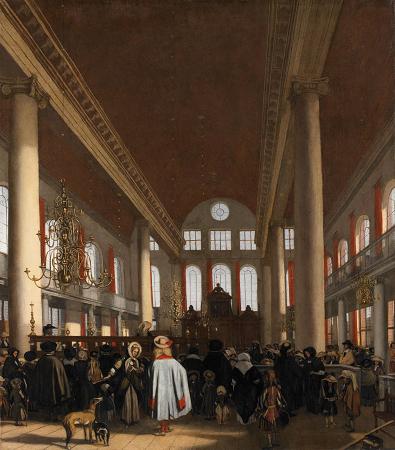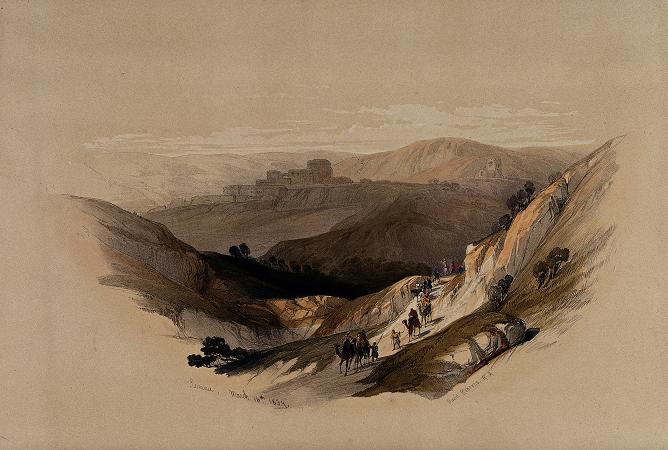Synagogue. A synagogue, also called a shul or a temple, is a place of worship for Jews and Samaritans. Synagogues have been depicted in art for centuries, often as places of worship, study, and community gathering. Artists have portrayed synagogues in various styles, from realistic depictions of specific buildings to symbolic representations of Jewish faith and culture. Synagogues may be shown as grand and ornate structures, or as simple and modest houses of prayer. Interior scenes of synagogues often feature congregants praying, studying, or celebrating holidays. These depictions can convey a sense of reverence, spirituality, and communal belonging. A synagogue has a place for prayer where Jews attend religious services or special ceremonies such as weddings, bar and bat mitzvahs, choir performances, and children's plays. They also have rooms for study, social halls, administrative and charitable offices, classrooms for religious and Hebrew studies, and many places to sit and congregate. They often display commemorative, historic, or modern artwork alongside items of Jewish historical significance or history about the synagogue itself. Synagogues are consecrated spaces used for Jewish prayer, study, assembly, and reading of the Torah. However, a synagogue is not always necessary for Jewish worship, due to adaptations during times of Jewish persecution in countries and regions that banned Judaism, frequently destroying and/or reappropriating synagogues into churches or even government buildings. Halakha states that communal Jewish worship can be carried out wherever a minyan, a group of at least 10 Jewish adults, is assembled, often led by a rabbi. Worship can also happen alone or with fewer than ten people, but certain prayers are considered by halakha as solely communal; these can be recited only by a minyan. In terms of its specific ritual and liturgical functions, the synagogue does not replace the symbol of the long-destroyed Temple in Jerusalem. Any Jew or group of Jews can build a synagogue. Synagogues have been constructed by ancient Jewish leaders, by wealthy patrons, as part of a wide range of human institutions including secular educational institutions, governments, and hotels, by the entire Jewish community of living in a particular village or region, or by sub-groups of Jewish people arrayed according to occupation, ethnicity, style of religious observance, or by the followers of a particular rabbi, such as the shtiebelekh of Hasidic Judaism. The Hebrew term is or house of assembly The Koine Greek-derived word synagogue also means assembly and is commonly used in English, with its earliest mention in the 1st century Theodotos inscription in Jerusalem.
more...



